#conolophus
Text

Galapagos Pink Land Iguana (Conolophus marthae), family Iguanidae, found on Wolf Volcano, northern Isabela Island, Galápagos Islands (Ecuador)
CRITICALLY ENDANGERED.
photograph via: Galápagos Conservancy
397 notes
·
View notes
Text

A Galapagos land iguana (Conolophus subcristatus) in the Galapagos Islands
by Oleg Nabrovenkov
#galapagos land iguana#conolophus subcristatus#conolophus#iguanidae#iguania#squamata#reptilia#chordata#wildlife: galapagos islands
60 notes
·
View notes
Text
youtube
Watch the American Climate Leadership Awards 2024 now: https://youtu.be/bWiW4Rp8vF0?feature=shared
The American Climate Leadership Awards 2024 broadcast recording is now available on ecoAmerica's YouTube channel for viewers to be inspired by active climate leaders. Watch to find out which finalist received the $50,000 grand prize! Hosted by Vanessa Hauc and featuring Bill McKibben and Katharine Hayhoe!
#ACLA24#ACLA24Leaders#youtube#youtube video#climate leaders#climate solutions#climate action#climate and environment#climate#climate change#climate and health#climate blog#climate justice#climate news#weather and climate#environmental news#environment#environmental awareness#environment and health#environmental#environmental issues#environmental justice#environment protection#environmental health#Youtube
7K notes
·
View notes
Note
🥚hai !!

Galápagos pink land iguana!
(Conolophus marthae)
53 notes
·
View notes
Text
The inhabitants state that those who inhabit the upper damp parts drink water, but that the others do not, like the tortoises, travel up for it from the lower sterile country.
"Journal of Researches into the Natural History and Geology of the Countries Visited During the Voyage of H.M.S. Beagle Round the World, 1832-36" - Charles Darwin
#book quote#the voyage of the beagle#charles darwin#nonfiction#water#land iguana#conolophus subcristatus#tortoise#testudo nigra#galapagos tortoise#galapagos islands#travel
0 notes
Text

Galápagos land iguana (Conolophus subcristatus)
Reptiles and Amphibians of the World. Written by Hans Hvass. Illustrated by Wilhelm Eigener. Originally published in 1958.
Internet Archive
122 notes
·
View notes
Text
Animal of the Day!
Galapagos Land Iguana (Conolophus subcristatus)
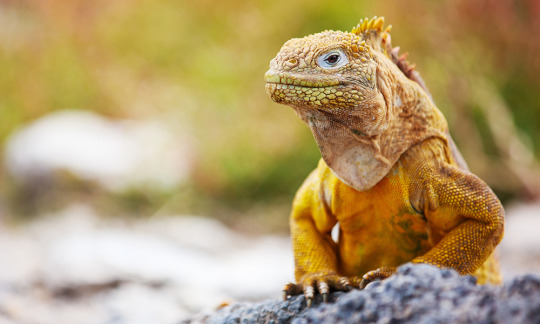
Photo from Galapagos Conservation Trust)
Conservation Status- Vulnerable
Habitat- Galapagos Islands
Size (Weight/Length)- 14 kg; 91 cm
Diet- Cacti
Cool Facts- Being one of the largest lizards in the Galapagos, the Galapagos land iguana has its pick of cactus. Prickly-pear cactus is a favorite. The iguana eats everything from the fruit and flowers to the pads and spines. Getting almost all of its water from cactus, these lizards only drink when it rarely rains. Almost going extinct in the 1950s from overhunting, mass breeding efforts have helped bring their populations to a relatively stable level. Despite there being plentiful land iguanas, some get frisky with marine iguanas and produce hybrid babies that can both swim and eat cactus.
Rating- 12/10 (Yellow lizards do be vibing.)
#Animal of the day#Animals#Reptiles#Lizards#Iguana#Friday#December 30#Galapagos land iguana#biology#science#conservation#the more you know
201 notes
·
View notes
Text
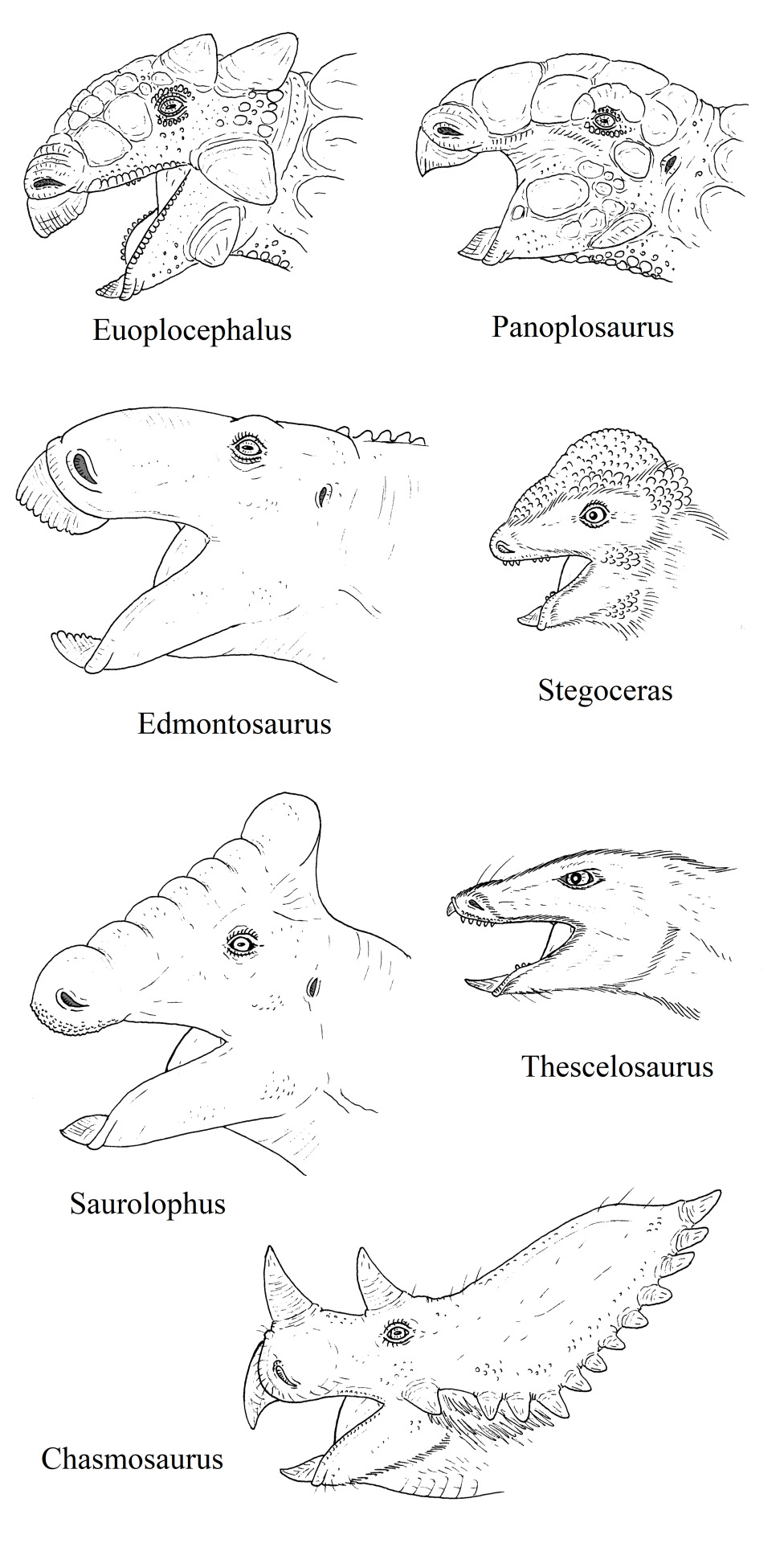
And another dinosaur thing - I said on the Saurolophus picture I was gonna draw cheekless dinosaurs, so here they are.
I'm following Ali Nabavizadeh's model, which suggests that the "ornithischian cheek" was actually housing these huge adductors:

And also using these nice references by domesticus1 from Twitter:
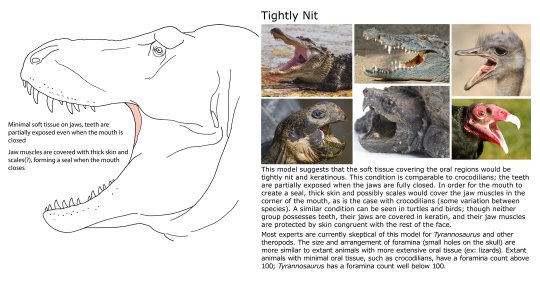


While the skulls of ornithischians do seem to have bony correlates for the "alternative lips" similar to herbivorous lizards like Conolophus and Uromastyx, the Nabavizadeh-style muscles still extend much further so we end up with "lepidosaur lips" regardless. The only exception is of course Panoplosaurus with those crazy rictal bones, thouh I don't think they would be just suspended in skin in the middle, but rather protecting the adductor.
As for the transition between lips and beak, I was inspired by the only modern animals I know of that have both:
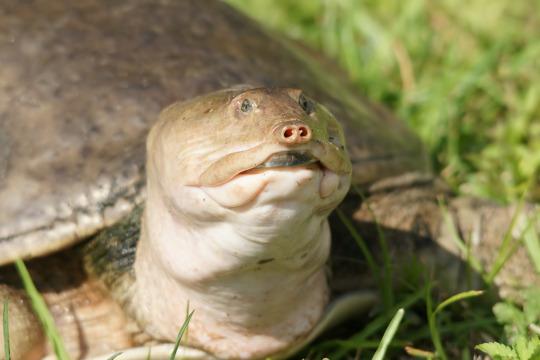
Finally, three notes:
Stegoceras does apparently have a beaked predentary, it's just small and not preserved on any skulls I've seen.
I gave Chasmosaurus under-frill fuzz based on the same logic as humans having armpit hair.
Saurolophus is depicted with a sort of inflatable nose-balloon in its deflated state.
14 notes
·
View notes
Text
L’IGUANA ROSA IN VIA D’ESTINZIONE TORNA A RIPRODURSI
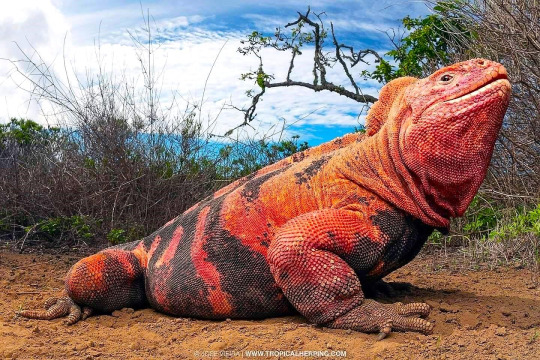
Una spedizione di scienziati ha trovato per la prima volta dalla loro scoperta una nuova generazione di iguana rosa (Conolophus marthae) appena nati, specie rinvenuta da pochi anni nelle isole Galapagos e in via di estinzione.
Finora i biologi avevano trovato solo esemplari adulti di questa specie scoperta nel 2009 che si distingue per il colore rosa brillante e le macchie nere. “Questa scoperta è un progresso significativo che ci consente di identificare un modo per salvare l’iguana rosa”, ha affermato Danny Rueda, direttore del parco. “Negli ultimi mesi il team ha documentato i nuovi siti di nidificazione e ha rilevato nuovi cuccioli di diverse età” sul vulcano Wolf, sull’isola Isabela, ha annunciato una nota del Parco nazionale delle Galapagos.
Con una popolazione totale di circa 200 individui, le iguane rosa sono a rischio a causa della presenza di specie invasive come i roditori, gatti e altri predatori presenti sull’isola. “Conoscere tutti gli aspetti che rendono vulnerabile la loro esistenza ci consentirà di intraprendere azioni tempestive, soprattutto contro le specie invasive ed evitare così di interrompere i cicli naturali di questi fragili ecosistemi”, ha aggiunto Rueda. Le isole Galapagos furono il laboratorio naturale dello scienziato inglese Charles Darwin che lo ispirarono a scrivere la sua teoria sull’evoluzione delle specie. Situate a 1.000 km dalla costa dell’Ecuador, ospitano due specie di iguane gialle, iguane rosa e iguane marine, anch’esse uniche al mondo. L’habitat delle iguane rosa è ristretto a una piccola area vicino alla sommità del vulcano Wolf, sul suo versante nord-est.
___________________
Fonte: Parque Nacional Galapagos

VERIFICATO ALLA FONTE | Guarda il protocollo di Fact checking delle notizie di Mezzopieno
BUONE NOTIZIE CAMBIANO IL MONDO | Firma la petizione per avere più informazione positiva in giornali e telegiornali

Se trovi utile il nostro lavoro e credi nel principio del giornalismo costruttivo non-profit | sostieni Mezzopieno
11 notes
·
View notes
Text
Iguanas reproducing on Galapagos island century after disappearing
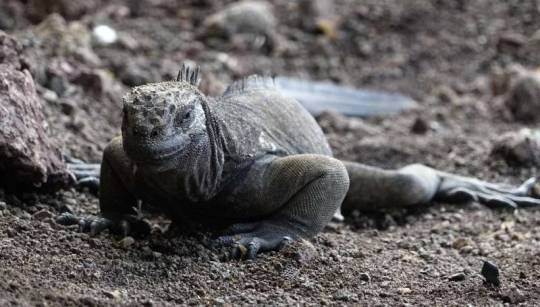
A land iguana that disappeared more than a century ago from one of the Galapagos Islands is reproducing naturally following its reintroduction there, Ecuador's environment ministry announced Monday.
The reptile from the Conolophus subcristatus species, one of three land iguanas living on the archipelago, disappeared from Santiago Island in the early part of the 20th century according to a 1903-06 expedition there by the California Academy of Sciences, the ministry said.
In 2019, the Galapagos National Park (PNG) authority reintroduced more than 3,000 iguanas from a nearby island to restore the natural ecosystem of Santiago, which lies at the center of the Pacific archipelago.
The remote island chain was made famous by British geologist and naturalist Charles Darwin's observations on evolution there, [where he remarked and noted that the island had an abundance of them].
source
23 notes
·
View notes
Link
4 notes
·
View notes
Text
The Work of Charles Darwin

Charles Darwin was, and still is, one of the most influential individuals in scientific history. His work has shaped our understanding of evolutionary biology and had a lasting impact on all areas of science.
Indeed, if it wasn’t for his theories that humans and other species have changed over time through natural selection, many major advancements in both medicine and genetics would not have been possible.
So what did Charles Darwin do exactly? In this article, we will explore the life-long journey of discovery that formed the basis for his theory of evolution by natural selection.
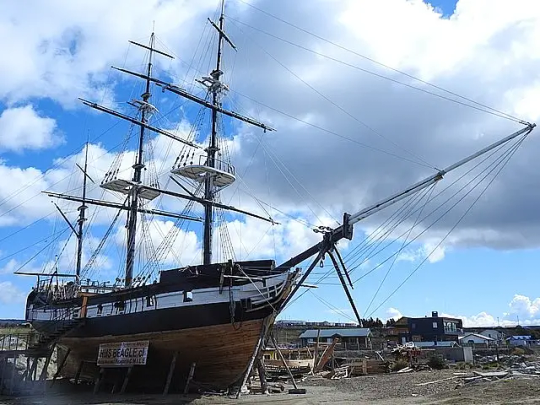
Full size replica of Charles Darwins HMS Beagle. Photo by Bombalot. Wikimedia.
Introducing Charles Darwin – Overview of his life and accomplishments
Charles Darwin (1809-1882) was an evolutionary biologist and naturalist whose discoveries raised disruptive questions about the nature of species, the origins of life, and scientific exploration. After witnessing and documenting various specimens during a trip aboard the HMS Beagle, Darwin proposed his groundbreaking concept that people, other animals, and plants had evolved by natural selection.
Darwin proposed that organisms must evolve in order to fit into their changing environment to survive and he called this process 'Survival of the Fittest'.
Thanks to writings such as 'On the Origin of Species' and 'The Descent of Man', Darwin has profoundly shaped science and given us insights into the mode in which life functions and how it came to be.
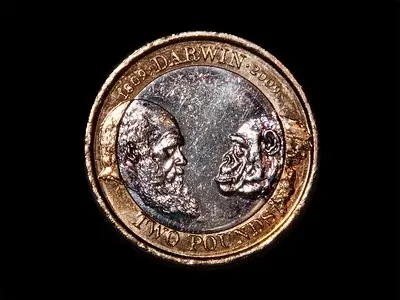
Charles Darwin 200 Years of Evolution £2 Coin. Photo by CGP Grey. Flickr.
Darwin’s Theory of Evolution – Exploring his groundbreaking discoveries
Charles Darwin's Theory of Evolution serves as a cornerstone for much of modern scientific thought. In his groundbreaking work, "On The Origin Of Species by Means Of Natural Selection,"
Darwin proposed the idea that species evolve over time through natural selection; in other words, advantageous traits within animals provide them with a better chance to survive and pass on these traits to their offspring, who carry the same characteristics.
This concept challenged the earlier beliefs that God created the Earth in six days (Creationism) and ultimately it changed the way scientists view nature today. Instead of an immutable structure set in place by a higher power, Darwin proposed that nature progresses through generations and is ever-evolving.
Darwin's Theory has been confirmed numerous times over as science has progressed and continues to help shape biological studies around the world.

Galapagos Land Iguan - Conolophus subcristatus at the Charles Darwin Research Station, Santa Cruz, Galapagos Islands. Photo by Dallas Krentzel. Flickr.
The Voyage of the Beagle – How this trip shaped Darwin’s Thinking
Charles Darwin set sail on the ship HMS Beagle on December 27, 1831, from Plymouth, England. He was only 22 years old when he was hired to be the ship's naturalist, on a five-year journey mostly spent sailing around South America.
Darwin's five-year journey aboard the Beagle left an indelible impression on him. He observed and collected specimens from every place he visited, including exotic tropical rainforests in South America, coral atolls in the South Pacific, and active volcanoes in Indonesia.
Darwin encountered many unique species during this voyage - something he hadn't experienced before - which challenged his views on creation.
As his observations accumulated, he began to slowly develop his own theory about the evolution of species through natural selection. Thus, by piecing together evidence from further afield than had ever been studied before, he was able to formulate his theory of evolution.
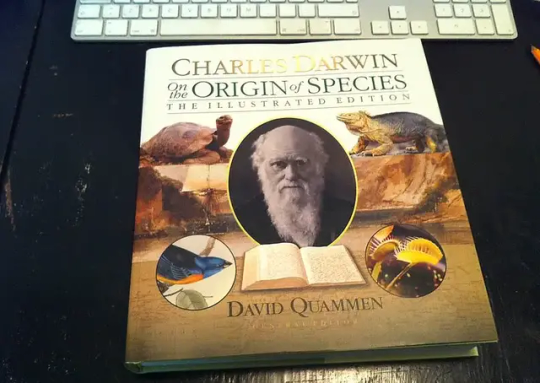
On the Origin of Species. Photo by Jeena Paradies. Flickr.
On the Origin of Species – Examining the Impact of his book on Science and Society
When Charles Darwin published “On the Origin of Species” in 1859, it sparked a revolution in scientific thought. This book put forth a compelling thesis — that species evolved over time due to natural selection — and it profoundly transformed our understanding of how organisms were related to one another and how they had come to be.
It was truly a pivotal moment in the history of science, ushering in an era of evolutionary biology and genetics.
Outside of the world of science, Darwin’s work also inspired heated debates over its implications for religion, ultimately leading some to question Creationism. As we approach its 160th anniversary, it is evident that “On the Origin of Species” left its mark on both science and society alike.
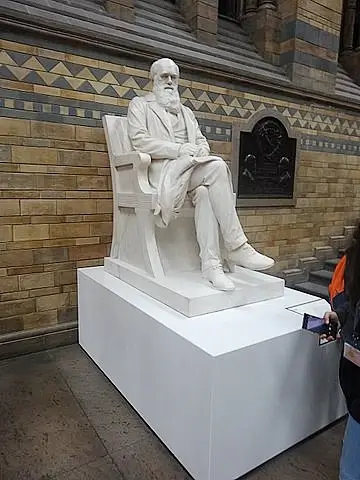
Statue of Charles Darwin - Natural History Museum, London. Photo by Jordiferrer. Wikimedia.
Legacy of Charles Darwin – Impact of his research today and into the future
The legacy of Charles Darwin is hard to overstate. His groundbreaking research into evolutionary theory had tremendous implications for our understanding of the natural world and its development. Darwin’s research sparked a passion in many people to better appreciate, understand, and protect modern ecosystems throughout the planet.
Even today, his principles are fundamental to conservation efforts involving species reintroduction, preservation of endangered animals, and even farming practices like crop rotation.
As we look towards the future, it stands to reason that the influence of Charles Darwin's work will only grow as scientific innovation accelerates and, hopefully, this will inspire more people to become stewards of the Earth and live in harmony with nature.
In conclusion, Charles Darwin's life achievements and discoveries revolutionized the field of science and changed the way we understand life on Earth.
His historic voyage across the world on H.M.S. Beagle opened his eyes to new ways of thinking and led him to formulate his Theory of Evolution, which is still widely accepted today as the fundamental explanation of how species adapt and survive over time. He then wrote and published On The Origin Of Species, which he supported with scientific, evidence-based observations.
His incredible contributions to science live on today in classrooms, laboratories, and natural history museum exhibits around the world - all testament to an incredibly influential scientist who grounded evolutionary principles in hard evidence and paved the way for future scientific advancements.
Conclusion
In the 160 years since Charles Darwin published On The Origin Of Species, his work has revolutionized science and had a lasting impact on society. His groundbreaking research into evolutionary theory sparked debates about Creationism and inspired many to become stewards of the Earth.
Even today, we still rely on principles laid out by Darwin in order to better understand how species evolve over time. As scientific innovation continues, it is likely that the influence of this remarkable scientist will only grow.
We should all strive to recognize and appreciate the immense contributions made by Charles Darwin throughout history so that future generations can continue to benefit from them for years to come.
Sources: THX News & Wikipedia.
Read the full article
0 notes
Text
¡'Milagro’ en isla de Galápagos! Nacen iguanas terrestres tras dos siglos de ausencia
La isla Santiago, una de las más grandes del archipiélago ecuatoriano de las Galápagos, ha sido escenario de nuevo, después de casi dos siglos, del nacimiento de varios ejemplares de iguanas terrestres, informaron este lunes expertos del Parque Nacional Galápagos (PNG).
Se trata de iguanas terrestres de la especie Conolophus subcristatus, que se han reproducido en la isla Santiago, donde 3 mil…

View On WordPress
0 notes
Photo

Only place to see this animal in the entire world… Santa Fe land iguana aka Conolophus pallidus. These lizards can live past 70 years old. They wait underneath cactus trees for fruits and pads to fall to the ground so they can eat them. Im grateful I got to nature journal them. More sketches and videos coming soon since I just got off the islands! #nature #galapagos #iguana #reptiles #cactus (at Santa Fe Island) https://www.instagram.com/p/CgaQ2VjvJ49/?igshid=NGJjMDIxMWI=
1 note
·
View note
Text
I watched one for a long time, till half its body was buried; I then walked up and pulled it by the tail; at this it was greatly astonished, and soon shuffled up to see what was the matter; and then stared me in the face, as much as to say, 'What made your pull my tail?'
"Journal of Researches into the Natural History and Geology of the Countries Visited During the Voyage of H.M.S. Beagle Round the World, 1832-36" - Charles Darwin
#book quote#the voyage of the beagle#charles darwin#nonfiction#land iguana#conolophus subcristatus#digging#burrowing#astonished#questions#galapagos islands
0 notes
Text

Grzimek's Animal Life Encyclopedia. Volume 6: Reptiles. Written by Bernard Grzimek. 1984.
1.) Green iguana (Iguana iguana)
2.) Lau banded iguana (Brachylophus fasciatus)
3.) Common basilisk (Basiliscus basiliscus)
4.) Marine iguana (Amblyrhynchus cristatus)
5.) Galápagos land iguana (Conolophus subcristatus)
6.) Spiny-tailed iguana (Ctenosaura pectinata)
#reptiles#lizards#green iguanas#lau banded iguanas#common basilisks#marine iguanas#Galápagos land iguanas#spiny-tailed iguanas#signature
149 notes
·
View notes
Photo
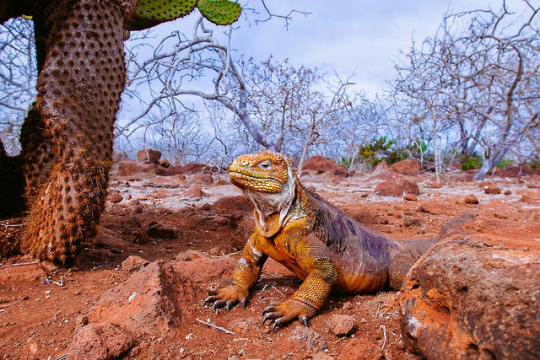
Galápagos land iguana - Conolophus subcristatus by seijdel
48 notes
·
View notes